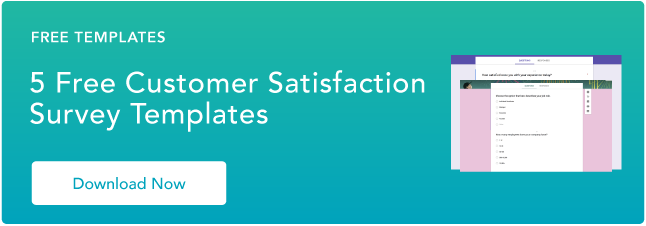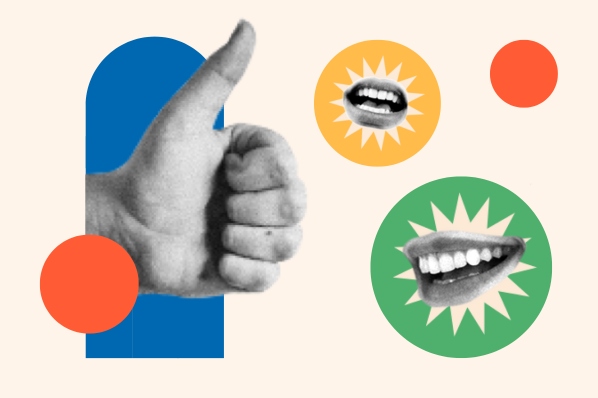The best customer service teams not only find solutions but find them quickly so customers can get back to using their product or service.
In this post, let's look at how you can create a customer responsive culture at your business.
Continue reading or jump ahead:
Customer Responsiveness
Customer responsiveness refers to how quickly and accurately your business is able to address support requests. It's a measure of the speed it takes your agents to initiate the interaction as well as the time it takes for them to complete the customer's request.
While you always want to reduce the amount of time customers wait on hold, it's equally important to focus on solving their problems.
It's great if a customer can pick up the phone and immediately reach an agent, but it doesn't mean much if that agent doesn't have a speedy solution waiting for them.
Customer Responsive Culture
A customer responsive culture encourages agents to put customer needs first and create effective solutions as quickly as possible.
This combination of speed and accuracy improves the team's overall productivity and generates delightful customer experiences.
But that's the biggest challenge of customer responsive culture: Finding the right balance between answering a customer quickly and making sure your reps are spending adequate time troubleshooting their issues.

One place to start is by setting the right expectations for your customers and your employees. If both sides understand when they should expect a response, there's less friction in the customer experience.
We've compiled more tips for creating a customer responsive culture in the next section.
How to Create a Customer Responsive Culture
- Set team and individual performance goals.
- Adopt automation.
- Create an omni-channel support experience.
- Use snippets, personalization tokens, and email templates.
- Provide self-service resources.
Here are five ways you can make your customer culture more responsive.

Let's review each in more detail.
1. Set team and individual performance goals.
Team goals are important because they hold your entire team accountable.
By setting goals for individual and team performance, agents know how quickly they're expected to answer customer inquiries.
Pro tip: At HubSpot, our support office has monitors set up to track our team's daily performance. If we're on pace, the numbers are green. If we need to catch up, the board turns an "angry" red so we know people are waiting.
2. Adopt automation.
Automating your service process is one of the most effective ways to improve responsiveness.
By integrating automation into your support channels, you'll expand your team's bandwidth and ensure an immediate response regardless of the communication medium.
Plus, many automation tools are free and can be easily installed into your website or support system.
Pro tip: A chatbot can respond to customers even when your team is out of office. And for phone support, you can install a machine learning service that either redirects the customer to additional resources.
3. Create an omni-channel support experience.
Another way you can reduce wait times is by adding more support channels to your service offerings.
If you only provide one or two ways to contact your team, you may be creating a bottleneck that's preventing your customer base from reaching you.
An omni-channel support system not only provides multiple channels for customers to contact you but also connects these mediums to create a unified, seamless experience.
Pro tip: Create an integrated support network that allows customers to start a conversation on one channel — like social media — then easily move it to another one — like phone, email, or live chat.
4. Use snippets, personalization tokens, and email templates.
There are tools agents can use that don't require a complete overhaul of your support system.
Snippets, personalization tokens, and email templates can save your team time when composing messages for live chat or email.
Snippets
Snippets are canned responses that are triggered when you enter a code into your keyboard.
This is particularly useful for writing introduction and conclusion messages, as well as for live chat agents who repeat the same messages regularly.

Personalization Tokens
Personalization tokens automatically call up customer information stored within your CRM.
That way, you can reuse a snippet or email template, and still personalize the interaction.
For example, a token might look something like this before you send a message: . Then, when you hit "Send" the token is replaced by the information you have on file.
Email Templates
Email templates are pre-written messages that agents can copy and paste as needed.
Templates help save time so reps don't have to rewrite the same answer to a problem they've seen before.
5. Provide self-service resources.
When you lower the number of incoming service inquiries, you can also reduce wait times and improve response rates.
Self-service resources, like knowledge bases or community forums, are excellent resources that customers can use to troubleshoot their problems.
If they have a simple question or issue, they don't have to reach out to your support team. Instead, they can work independently to find a solution.
Pro tip: Invest in self-service resources so you can free up your top agents to work on urgent or complex issues.
Average Customer Response Times
Average customer response times vary by channel. The average email response time is 12 hours and 10 minutes across industries. The average call center response time is 46 seconds. For live chat, the average response time is 5 minutes and 57 seconds. And most businesses respond to social media inquiries within one to two hours.
One question that many customer service teams have is, "How fast do we need to be?"
The answer is tricky because it varies depending on the communication medium you're using.
Here are some of the average response times for different customer support channels.
Phone
Since phone wait times can vary depending on industry, seasonality, time of day, and many other factors, it's difficult to narrow down a universal average.
However, one study found the average call center wait time is 46 seconds across industries.

Historically, the industry standard for call centers is 80/20. This means that 80% of incoming calls should be answered within 20 seconds.
According to a recent study, nearly a third of customers expect businesses to respond to emails in one hour or less.

However, according to SuperOffice, it takes the average business 12 hours and 10 minutes to respond to a customer's email.
Live Chat
The average live chat wait time is 5 minutes and 57 seconds, and the average length of a live chat session is 11 minutes and 15 seconds.

When it comes to live chat, the majority of consumers expect a response within five minutes.
Social Media
Based on research conducted by Sprout Social, the average social media response time for the majority of businesses is within one to two hours.
The below graphic compares consumer expectations for a response on social to the average response times for brands across industries.

The Power of Speed
Consumers have high standards for service, and both speed and quality are two factors that can help you stand out from your competitors.
Make sure you prioritize customer responsiveness as part of your 2023 customer service strategy.
Editor's note: This post was originally published in April 2020 and has been updated for comprehensiveness.
Customer Feedback
.png?width=112&height=112&name=Image%20Hackathon%20%E2%80%93%20Horizontal%20(24).png)



![How to Write a Thank You Letter for Customer Feedback [Templates]](https://53.fs1.hubspotusercontent-na1.net/hubfs/53/thank-you-letter-for-customer-feedback-1-20241003-1267887.webp)


.png)

-1.png)


